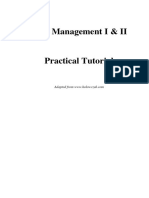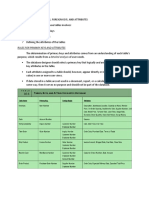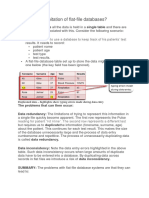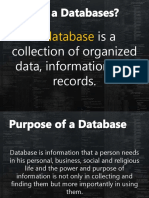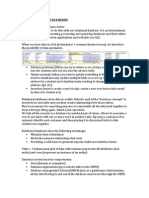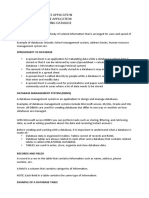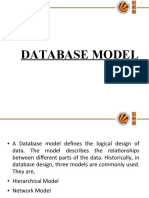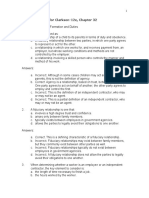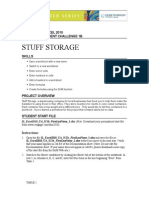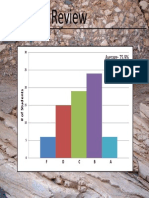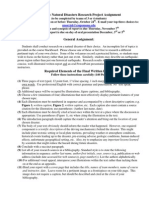0% found this document useful (0 votes)
68 views12 pagesRelational Database Elements
This document provides an outline for a lesson on relational database elements. It discusses the expected learning outcomes, which are to define key terms and explain the common elements of relational databases. The common elements covered are tables, queries, forms, and reports. Tables are the fundamental building blocks and are organized into rows and columns. Queries allow users to extract records based on criteria. Forms are used for entering and looking up data according to design principles. Reports display output from tables and queries.
Uploaded by
Jerry WongCopyright
© © All Rights Reserved
We take content rights seriously. If you suspect this is your content, claim it here.
Available Formats
Download as PPT, PDF, TXT or read online on Scribd
0% found this document useful (0 votes)
68 views12 pagesRelational Database Elements
This document provides an outline for a lesson on relational database elements. It discusses the expected learning outcomes, which are to define key terms and explain the common elements of relational databases. The common elements covered are tables, queries, forms, and reports. Tables are the fundamental building blocks and are organized into rows and columns. Queries allow users to extract records based on criteria. Forms are used for entering and looking up data according to design principles. Reports display output from tables and queries.
Uploaded by
Jerry WongCopyright
© © All Rights Reserved
We take content rights seriously. If you suspect this is your content, claim it here.
Available Formats
Download as PPT, PDF, TXT or read online on Scribd
/ 12











